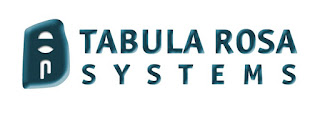|
RFID (radio
frequency identification)
|
|
FROM WHATIS.COM RFID (radio frequency identification) is a form of wireless communication that incorporates the use of electromagnetic or electrostatic coupling in the radio frequency portion of the electromagnetic spectrum to uniquely identify an object, animal or person. Use cases for RFID technology include healthcare, manufacturing, inventory management, shipping, retail sales and home use. Every RFID system consists of three components: a scanning antenna, a transceiver and a transponder. When the scanning antenna and transceiver are combined, they are referred to as an RFID reader or interrogator. The transponder is located in the RFID tag itself.
The read range for RFID
tags varies based on factors including the type of tag, type of reader, RFID
frequency and interference in the surrounding environment or from other RFID
tags and readers. Generally speaking, tags that have a stronger power source
also have a longer read range.
RFID and bar code
technology are used in similar ways to track inventory, but three
important differences make each one a better choice in certain situations:
How RFID tags work
An RFID tag consists of a
microchip, memory and antenna. The antenna uses radio frequency waves to
transmit a signal that activates the tag's transponder. Once activated, the
transponder reads or writes data and transmits it back to the antenna for
wireless transmission to the reader. The data is used to notify a
programmable logic controller in the reader that an action should occur. The
action could be as simple as raising an access gate or as complicated as
interfacing with a database to carry out a monetary transaction.
RFID tags typically hold
less than 2,000 KB of data, including a unique identifier/serial number. Tags
can be read-only or read-write.
Types of RFID tagsThere are two main types of RFID tags: active RFID and passive RFID.
An active RFID tag has its
own power source, which is usually a low-power battery. A passive RFID tag,
on the other hand, does not require batteries. Instead, it receives its power
from the reading antenna, whose electromagnetic wave induces a current in the
RFID tag's antenna.
Types of RFID systemsThere are three main types of RFID systems: low frequency (LF), high frequency (HF) and ultra-high frequency (UHF). Microwave RFID is also available. Frequencies vary greatly by country and region.
|
Let's remove this guy once and for all!
++++++++++++++++++++++++++++++++++++++++++++++++++++++++
Good Netiquette And A Green Internet To All!
=====================================================================Tabula
Rosa Systems - Tabula Rosa Systems (TRS) is dedicated to providing Best
of Breed Technology and Best of Class Professional Services to our
Clients. We have a portfolio of products which we have selected for
their capabilities, viability and value. TRS provides product, design,
implementation and support services on all products that we represent.
Additionally, TRS provides expertise in Network Analysis, eBusiness
Application Profiling, ePolicy and eBusiness Troubleshooting.
We can be contacted at:
sales@tabularosa.net
or 609 818 1802.

www.amazon.com/author/paulbabicki
====================================================

Catfishing
From Wikipedia,
the free encyclopedia
Catfishing is a type of deceptive activity where a person creates a
sock puppet
social networking
presence, or fake identity on a social network account,
usually targeting a specific victim for deception.
Catfishing is
often employed for romance scams on
dating websites. Catfishing may be used for financial gain, to compromise a
victim in some way, or simply as a form of trolling or wish fulfillment.
Catfishing
media has been produced, often centering around victims who wish to identify
their catfisher
|
We can be contacted at:
===============================================================In addition to this blog, Netiquette IQ has a website with great assets which are being added to on a regular basis. I have authored the premiere book on Netiquette, “Netiquette IQ - A Comprehensive Guide to Improve, Enhance and Add Power to Your Email". My new book, “You’re Hired! Super Charge Your Email Skills in 60 Minutes. . . And Get That Job!” has just been published and will be followed by a trilogy of books on Netiquette for young people. You can view my profile, reviews of the book and content excerpts at:
www.amazon.com/author/paulbabicki
Anyone who would like to review the book and have it posted on my blog or website, please contact me paul@netiquetteiq.com.
In addition to this blog, I maintain a radio show on BlogtalkRadio and an online newsletter via paper.li.I have established Netiquette discussion groups with Linkedin and Yahoo. I am also a member of the International Business Etiquette and Protocol Group and Minding Manners among others. I regularly consult for the Gerson Lehrman Group, a worldwide network of subject matter experts and I have been contributing to the blogs Everything Email and emailmonday . My work has appeared in numerous publications and I have presented to groups such as The Breakfast Club of NJ and PSG of Mercer County, NJ.
Additionally, I am the president of Tabula Rosa Systems,
a “best of breed” reseller of products for communications, email,
network management software, security products and professional
services. Also, I am the president of Netiquette IQ. We are currently developing an email IQ rating system, Netiquette IQ, which promotes the fundamentals outlined in my book.









No comments:
Post a Comment